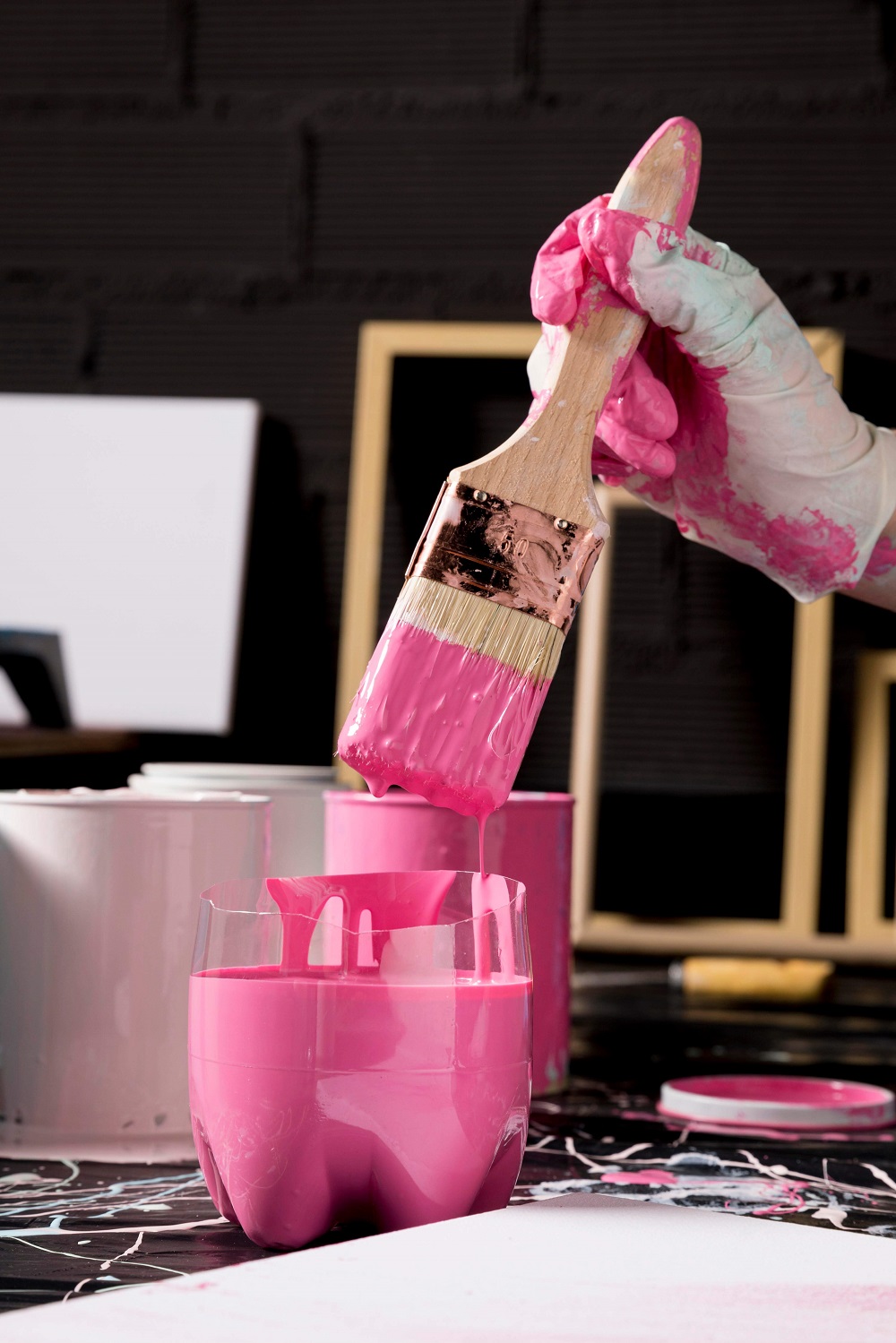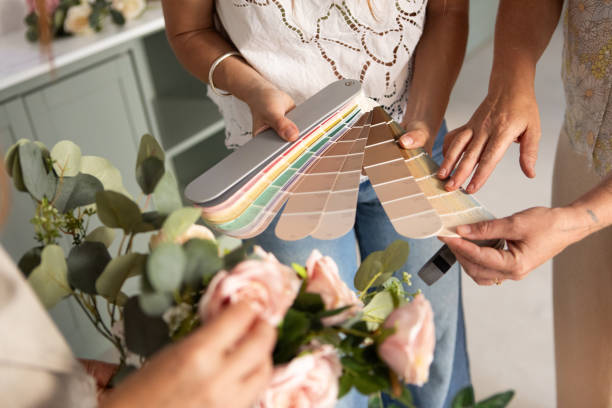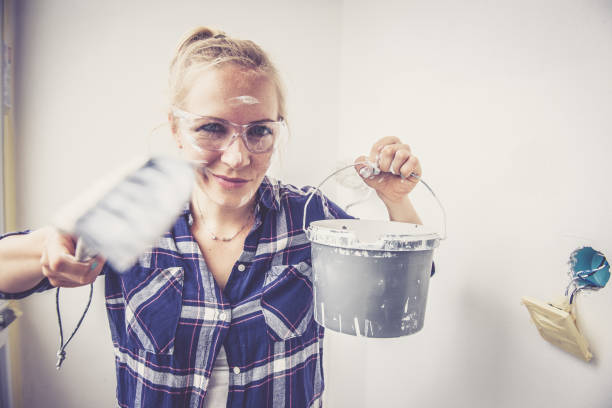Selecting the appropriate type of paint is essential for producing professional-looking results with lasting durability, and gloss paint has long been one of the go-to choices among both amateur painters and professionals alike. But why is gloss so widely used, and what are its benefits? In this post I’ll walk through everything you need to know about gloss paint including when and how best to apply it effectively.
Applying gloss paint correctly is crucial when refreshing woodwork, doors or furniture. At NevisPaints, our focus lies on helping our customers achieve stunning results; let’s dive right in!
What Is Gloss Paint?
Gloss paint is a high-sheen finish designed to reflect light and give surfaces an impressively sleek, polished look. Typically applied over trim, doors, skirting boards or furniture requiring durability with easy cleaning needs such as trim and doors; preparation before application of gloss paint should always be prioritised due to its reflective nature; otherwise any imperfections might show through as part of its reflection surface.
Gloss paint has long been favoured in high traffic areas that demand durability and ease of maintenance, such as cafes or retail areas. At NevisPaints, we often advise gloss for areas which see regular wear and tear as it provides an effective defence against pressure from heavy use.
When is Gloss Paint the Right Choice for My Project?
Are you trying to determine if gloss paint is appropriate for your next project? Below are a few instances when its use would prove fruitful:
High Traffic Areas
Gloss paint is highly durable, making it the ideal choice for high-traffic areas such as hallways, kitchens and bathrooms. With its hardwearing nature able to withstand everyday bumps and scrapes without showing signs of wear – not to mention being easy to wipe clean – glossy paint makes keeping these spaces looking their best a simple task.
Doors and Trim
One of the primary applications for gloss paint is on doors and trim. Often being touched, scuffed, and knocked about by visitors to your home or workplace, gloss paint provides a tough protective layer which stands up well to these daily challenges. Plus its glossy sheen adds an attractive modern touch.
Furniture Makeovers
Looking to revitalize old furniture? Gloss paint offers a great way to give it new life and will leave your pieces looking brand new once more – not to mention its long-term durability which ensures tables, chairs and other regularly used pieces won’t wear down over time!
Rooms Requiring Brightness
Gloss paint’s reflective properties can bring light into a darker room by scattering its light around. If this is something your space could use a boost from, consider applying gloss paint on features such as trim or built-ins to help light travel further and brighten it further.
NevisPaints customers have achieved great results using gloss paint in creative ways – from feature walls to furniture transformation.
How to Apply Gloss Paint: Step-by-Step Guide
Applying gloss paint can be different than other types of paint due to its sheen and consistency; but don’t worry: I will walk you through each step step by step!
1. Preparation is Key
Proper Preparation Before even opening your gloss paint can, the surface being painted must be properly prepared. As this type of paint can highlight imperfections on surfaces it touches, making sure they’re smooth and free from bumps is key for success when painting with it.
- Clean the surface:
Use mild detergent or a damp cloth to wash away dirt, grease, and dust from the surface.
- Fill holes and cracks:
Any imperfections will show through in the glossy finish of wood filler or spackle to smooth over any imperfections that remain visible.
- Sand the Surface:
For best results, lightly sanding an area to achieve a smooth surface will create the ideal environment for paint to adhere better and to adhere to. On previously painted surfaces, remove old gloss paint so as to allow gloss paints to adhere more securely.
Nevis Paints believes in the value of proper preparation to guarantee you achieve an outstanding finish. We focus on this aspect when providing advice.
2. Priming the Surface
Applying primer before painting with this type of paint can ensure better adhesion and an even finish, making for smoother painting experience overall. For optimal results, choose a primer compatible with the gloss paint you plan to use.
3. Apply the Gloss Paint
Once your surface has been prepared and primed, the next step should be applying a gloss paint layer. Here’s how you can do it effectively:
- Stir the Paint:
Gloss paint can separate, so make sure to stir it before using.
- Select an Appropriate Brush:
High-quality synthetic brushes work best when painting gloss paint onto larger, flat surfaces; however, foam rollers may also work effectively for these purposes.
- Apply thin, even coats:
Instead of trying to cover everything at once, spread thin coats evenly for an improved finish. Allow each one to dry fully before applying another one.
- Brush in the direction of the grain:
For best results when painting wood surfaces, always brush with the grain direction. Doing this will result in an outstanding final look.
4. Drying and Finishing
Gloss paint takes longer to dry than other forms, so be patient. Allow each coat of this paint to fully dry before adding another; depending on its brand, waiting 24 hours or more between applications might be necessary for an ideal result. Additionally, lightly sand between each coat using fine-grit sandpaper will add an added level of finish quality.
At NevisPaints, we recommend giving your paint plenty of time to set before exposing it to heavy use.
Finding the Right Gloss Paint
Not all gloss paints are created equal, so when selecting one for your project it is important to keep in mind factors like:
- Water-based vs. oil-based:
When it comes to gloss paints for indoor projects, water-based gloss dries faster and has less of an odour, making them a popular choice. Oil-based gloss paints provide greater durability but take longer to dry with stronger odour.
- Finish Types:
Gloss is typically very shiny; however, there are variations such as high-gloss, satin gloss, and semi-gloss that offer various levels of reflectivity. High-gloss provides the brightest reflection, while satin gloss offers more subdued effects.
At Nevis Paints, we carry an array of gloss paints that can meet every requirement, whether that means fast-drying options or more long-term finishes.
Common Mistakes to Avoid
While applying this type of paint may appear straightforward, there are a few mistakes you should try to avoid for optimal results. Here’s what they are:
- Skipping the primer:
Primer helps the paint adhere better to surfaces and prevent peeling or flaking later.
- Rushing the drying process:
This finish needs time to set in between coats – trying to rush this process could result in patchy or uneven results.
- No sanding between coats:
Lightly sanding between coats can help create a professional finish, and overloading a brush or roller could result in drips and uneven coverage; thinner layers are always preferable.
Gloss paint can create an eye-catching finish for many surfaces, from doors and trim to furniture. With proper preparation and application techniques, achieving professional-looking results that last will take time – take your time in preparing surfaces before applying thin, even coats for optimal results.
Nevis Paints is here to ensure your painting projects run smoothly—from selecting the right finish to advising on whether gloss is the best choice. So next time you plan a painting project, consider this option carefully for an impressive, long-lasting result!






